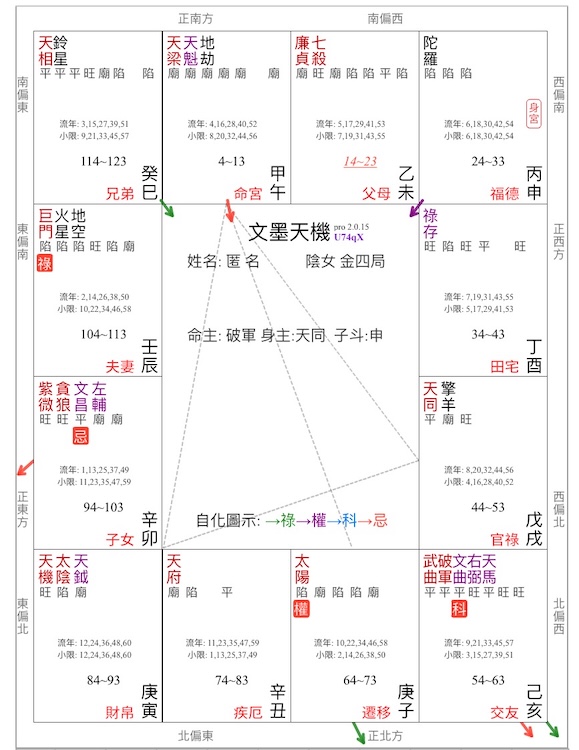Purple Star astrology or Zi Wei Dou Shu (紫微斗數) is a traditional Chinese astrology used to analyze a person’s destiny. Developed over a thousand years ago, it remains popular in Taiwan, Hong Kong, and other parts of Asia for its detailed and accurate readings.
Purple Star Astrology: A Timeless Tool for Life Planning and Success
At its core, Purple Star Astrology is a method of analyzing a person’s fate and life path using a natal chart, calculated based on their birth date and time. The chart consists of twelve “houses” or “palaces”, each representing a different area of life — such as career, wealth, relationships, health, and family. Within this chart, there could be over 100 stars are positioned according to precise formulas. The most important of these is the Purple Star (Zi Wei), often associated with the North Star, which gives the system its name.
The term “Dou Shu” refers to the constellations known as the Northern and Southern Dippers, which were historically used in Chinese cosmology to chart the heavens. Purple Star astrology combines these star systems into a symbolic map of a person’s life, offering insights into both personality and destiny.
Unlike Western astrology, which is based on zodiac signs and planetary movements, Purple Star astrology focuses on fixed star positions and the intricate relationships between stars within twelve life houses. Rather than offering daily horoscopes, it reveals long-term patterns and key life phases—such as times of success, difficulty, or major transformation. This strategic, big-picture perspective has made it especially popular among Asian businesspeople seeking to navigate the highs and lows of their career and life journey.

From Secret Tradition to Modern Revival
Purple Star Astrology has its roots in Taoist philosophy and was first documented in Taoist texts. It was systematized during the Song Dynasty by the scholar Chen Xiyi, and later developed further in the Ming and Qing dynasties. For centuries, knowledge of the system was closely guarded and passed down among select scholars and spiritual practitioners, which limited its public exposure.
Modern interest in Purple Star Astrology began growing in the mid-20th century, especially in Chinese-speaking regions. Despite the rise of modern science and psychology, it continues to attract both casual followers and serious researchers, partly due to its structured logic and detailed life analysis.
For those unfamiliar with Chinese metaphysics, Purple Star astrology can be compared to a highly intricate personality and life roadmap. While it requires expert interpretation, many find its insights surprisingly relevant, often using it for personal guidance, career planning, and relationship understanding.
Though deeply rooted in ancient Taoism thought, Purple Star astrology remains a living tradition — one that continues to evolve while staying true to its classical foundations.

